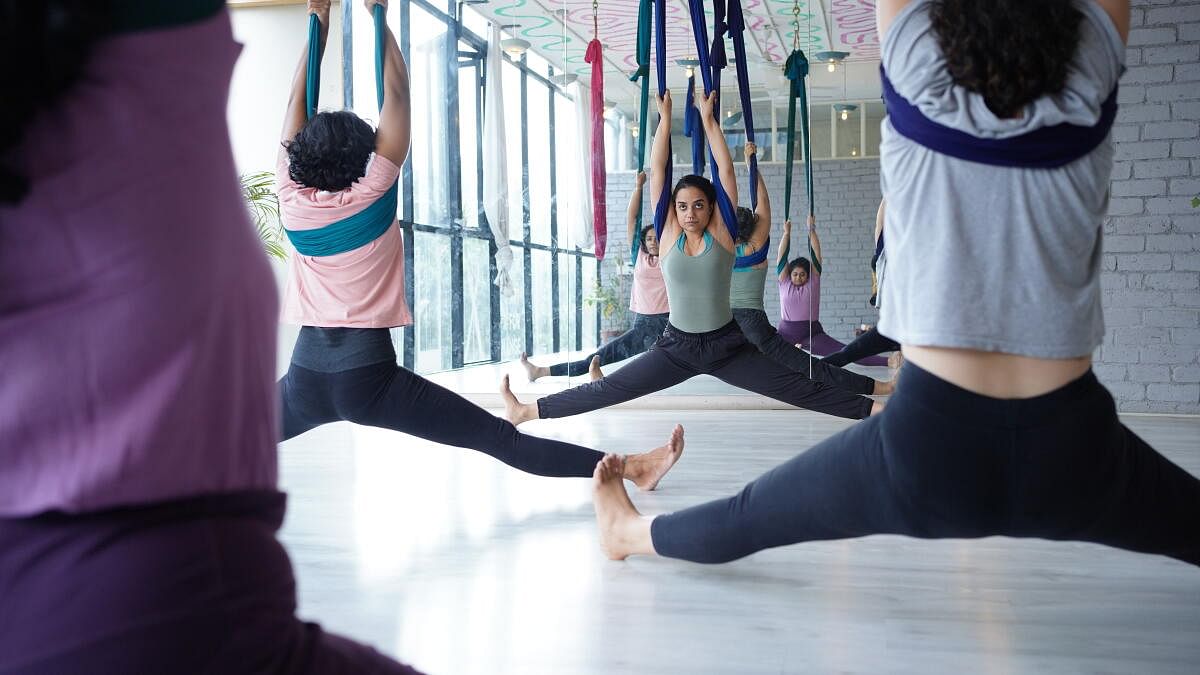
Hanging upside down seems to be Bengaluru’s new obsession. The use of aerial silk in dance, theatre, and fitness is on the rise.
Aerial silk is a type of performance in which artistes hang from a special, stretchable fabric. Originally used by circus performers, lately, it has been adapted for the fields of dance, yoga, and fitness. The aerial silk systems in Bengaluru are suspended 15 to 20 feet above the ground.
Hang on
Loka Studio for Movement Practices conducts aerial silk classes at its studio in RT Nagar, and also at venues like Bangalore Creative Circus in Yeshwanthpur, Chaos Faktory in HSR Layout, and Etram Dance Academy in Whitefield. The number of students learning aerial silk at each of these venues range from eight to 16.
While Loka studio teaches aerial dance in the first half of the class and aerial yoga in the other half, Flux, a school of arts in Indiranagar, offers a combination of Pilates, dance, yoga and aerial silk. It builds on the concept of using props in yoga as popularised by yoga guru B K S Iyengar, says operations in-charge Avinashi Singh. They have 20-25 students enrolled at three levels — beginner, intermediate, and advanced.
The regular classes can be booked at a fee of Rs 7,000 to Rs 8,000 a month while single sessions cost Rs 1,000 to Rs 1,500. Teacher certification courses are also available.
According to the studios, people are signing up for a wide range of reasons — from professional upskilling to personal development and for ‘fun’.
“Practising aerial silk gives you an adrenaline rush akin to bungee jumping but in a much safer environment,” explains Vishwakiran Nambi, director of the Loka studio. “It makes you feel like you are flying,” says Sahiba Singh, founder-instructor at Flux.
Dance circuit
Vishwakiran says aerial silk opens up a world of possibilities for choreographers. “Spatially, performances are limited by an artiste’s height but with aerial silk, you get to use the entire vertical dimension on the stage,” he explains.
IT professional Ishant is training in aerial silk to get better at contemporary dance. “While both art forms have similarities, aerial silk demands more physical stability and awareness of the body,” he notes. Since he is scared of heights, aerial practice is also helping him face his fears.
Health factor
Climbing the fabric, holding up mid-air, hanging upside down, and dropping down are four basic moves of aerial silk. Every other manoeuvre is a combination of these four moves (called climb, lock, hang, and drop), explains Vishwakiran.
The constant climbing and pulling oneself upward works out the body, he says, explaining why aerial silk has become popular in the fitness world. It strengthens your core, adds Avinashi. Inverted postures improve blood flow and spinal alignment, points out Sahiba.
Fitness enthusiast Kishore Acharya says aerial silk “is one of the toughest things” he has done. “While most exercises stop at climbing or pulling, in the case of aerial silk, that is just the beginning,” he explains.
Even chartered accountant Sneha Sridhar has pinned her fitness goals on aerial silk training. At the same time, she views it as an art form that she is getting better at. For data scientist Veda Krishnamurthy, gliding and twisting her body mid-air has become like “therapy”. “I forget all my stress (in the moment),” she shares. Sahiba believes aerial silk can ease people into doing yoga asanas. “As the hammock supports you, performing feats like headstands becomes much easier,” she says.